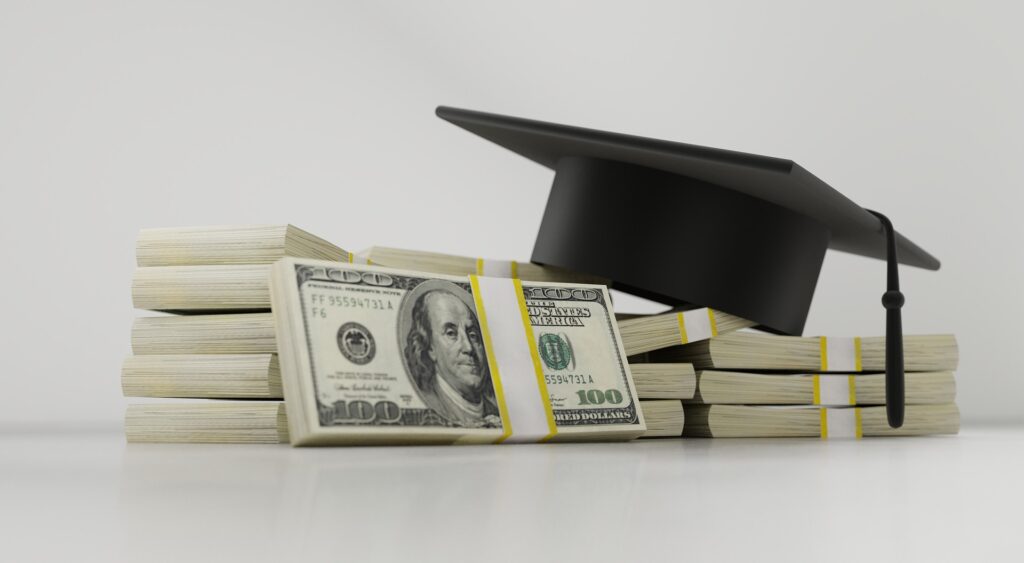Jump to: About Student Loans | Types of Student Loans | Student Loan Forgiveness Programs | Paying for Student Loans | Refinance & Consolidation

Blanche can help find ways to pay for college. Check out our Top Picks for Student Loans (updated monthly). You can also chat with us any time to find the right product.
Student Loans — What are they good for?
Like many people in this country, you sought higher education to get ahead in the working world. Maybe it was to better yourself, get that promotion, or even land the dream job you always wanted. To do so, you may have, unfortunately, put yourself into debt with student loans. With the rising cost of college and universities, many students, like yourself, are turning to student loans to pay for their education. Because of this, student loan debt has risen to $1.56 Trillion. The amount of US borrowers with student loan debt is 44.7 million and a delinquency or default rate of 11.4%. This is broken down further with 42 million students that have borrowed $100,000 or less and 2.5 million with debt greater than $100,000.
Types of Student Loans
There are two types of student loans to consider when going to college.
- Federal Student Loans – With federal student loans, Congress sets the interest rates yearly and bases them on the 10-year Treasury note. Most of the fees associated with a federal student loan are charged as a percentage of your loans total amount. Rates, however, are fixed for the life of the loan.
- Private Student Loans – With private loans, all interest rates are based on your credit. Many private lenders won’t charge origination fees, and borrowers can choose either a variable or fixed interest rate for repayment. Variable rates, however, are subject to change quarterly and quite possible monthly.
Student Loan Forgiveness Programs
There are a few forms of student debt forgiveness for student loans.
- Public Service Loan Forgiveness – This was a product of the College Cost Reduction and Access Act of 2007 and was established as a program that forgives some federal student loans under specific circumstances. After you make 120 on-time monthly and qualified payments while you work in a public service position, you may be eligible for this program.
- Teacher Student Loan Forgiveness – If you’re a teacher, this program could possibly forgive some or all of your federal student loans. There are specific qualifications for this program and don’t help with any private student loans that you may have.
How To Pay Student Loans
It is imperative to monitor your student loan since the sooner you pay it, the more money you save. Here are four simple tips to pay student loans faster:
- Pay extra towards your student loan. If you have private and federal student loans, always pay off the private loans first.
- Paying above the minimum on your student loan can significantly impact how much you pay overall.
- Look for loan repayment programs. Certain professions, like healthcare or law, could benefit from loan repayment programs.
- Refinance your student loan to a lower rate if you have a strong credit score and reliable income.
Refinancing & Consolidation
Student Loan Refinancing vs. Consolidation
- Consolidation – While this option probably won’t save you money, it still has its benefits.
- It can mean fewer bills and payments to keep track of each month.
- The ability to switch out older loans, especially variable rate federal loans for a new fixed-rate loan. This helps prevent higher interest rates in the future. It also means lower monthly payments but could also lengthen the time of your term of repayment.
- Refinancing – This is when you pay off your federal student loan with a private loan. This can do the following:
- Lower what you pay monthly.
- Shorten your repayment term,
- Reduces the amount of interest you would pay on your loan.
- You can choose a variable interest rate to help pay it off faster.
- Also, enjoy the benefits of consolidation as well.
This is overwhelming!
When looking at student loans, consider what kind you’ll need, what the payoff amount would be, and your ultimate goal for borrowing. Also, borrow only what you need, as many students may get more than they need and end up paying more in the end.